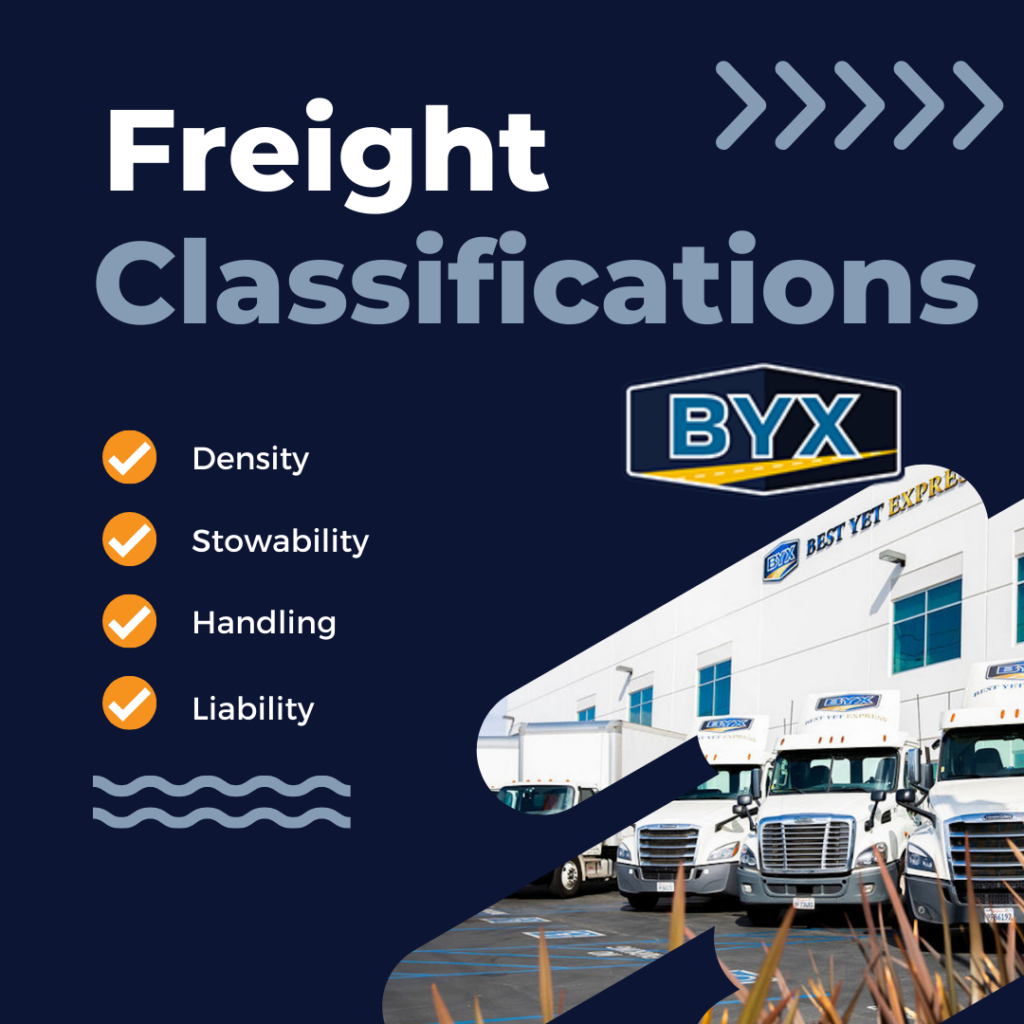In the intricate world of logistics, freight classification plays a pivotal role in ensuring the smooth movement of goods from point A to point B. Understanding how freight is classified is essential for shippers, carriers, and logistics professionals alike. In this blog post, we delve into the fundamentals of freight classifications, exploring what they are, how they work, and why they matter in the world of shipping and transportation.
What is Freight Classification?
At its core, freight classification is a system used to categorize different types of freight based on their characteristics, handling requirements, and transportation considerations. Nearly every type of product or commodity shipped in this country has its own NMFC code. This classification system helps determine shipping rates, packaging requirements, and other logistical details essential for moving goods efficiently and cost-effectively. It’s used for interstate, intrastate, and foreign commerce movement of LTL (less than truckload) shipments.
The well-defined classes of this system are based on four factors that determine how easy it is to transport a specific commodity. This is often referred to as a commodity’s “transportability.” In general, the higher the code number of the item, the more expensive it will be to transport.
Key Elements of Freight Classification:
- National Motor Freight Classification (NMFC):
- The NMFC is a standardized system used in the United States to classify freight based on various factors, including density, stowability, handling, and liability. It assigns a unique freight class to each type of commodity, ranging from class 50 to class 500.
- Commodity descriptions, packaging requirements, and transportation rules are outlined in the NMFC to ensure consistency and clarity in freight classification.
- Density-Based Classification:
- Freight can also be classified based on its density, which refers to the weight of a shipment relative to its volume. Higher-density shipments are typically assigned lower freight classes, while lower-density shipments are assigned higher freight classes.
- Density-based classification helps account for the space occupied by freight in transportation vehicles, influencing shipping rates and allocation of resources.
- Special Handling Requirements:
- Certain types of freight may require special handling due to their size, shape, fragility, or hazardous nature. These special handling requirements are taken into consideration during freight classification to ensure safe and secure transportation.
- Examples of special handling requirements include temperature control for perishable goods, secure packaging for fragile items, and hazardous materials handling for dangerous goods.
Why Freight Classification Matters:
- Cost Calculation:
- Freight classification directly impacts shipping rates, with lower-class freight generally costing less to ship than higher-class freight. Understanding the classification of your shipments helps accurately calculate shipping costs and budget for transportation expenses. This requires accurate information about the product’s weight and dimensions and providing inaccurate information may result in additional accessorial fees for reweighing efforts.
- Carrier Selection:
- Different carriers may specialize in handling specific types of freight or offer more competitive rates for certain freight classes. By knowing the classification of your shipments, you can choose the most suitable carrier for your transportation needs.
- Regulatory Compliance:
- Compliance with freight classification standards and regulations is essential for avoiding penalties, delays, and other complications in the shipping process. Adhering to classification guidelines ensures smooth and efficient transportation operations.

Learn how top trucking companies like Best Yet Express can provide the most competitive rates for all your transportation needs, regardless of freight classification. We’re here to help!







